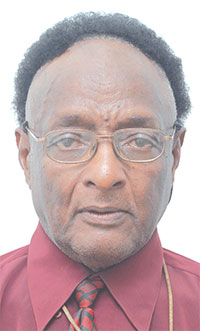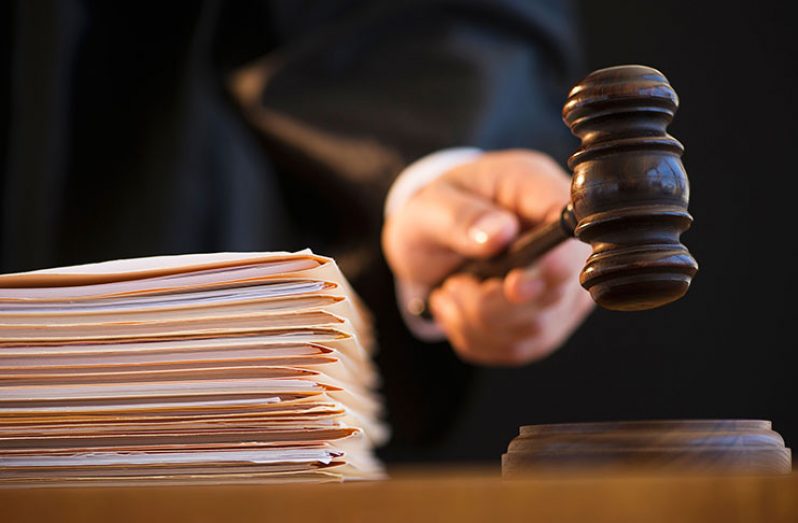TWO tried for robbery with aggravation –Samaroo and Ezaz- were convicted by the jury and sentenced by the trial judge.

But on appeal, the Supreme Court of Criminal Appeal, constituted by Chief Justice Peter Bell, Justice Frederick Boland and Justice Joseph Wills, freed the alleged robbers after finding that the alibi defence was not adequately put to the jury by the trial judge.
That Appellate Court held: It is of paramount importance that the judge in his summing-up must fairly put an accused’s defence to the jury and as that had not been done in an otherwise careful and meticulous summing-up the conviction and sentence must be quashed. Appeals allowed.
B .O.Adams for Appellants.
G. M. Farnum, Solicitor General for Respondent.
At the conclusion of the arguments the judgment of the Court was delivered by Chief Justice Bell.
Judgment of the Court: The Chief Justice said: These appeals, which were heard together are appeals against convictions and sentences.
The appellants had appeared before the judge and jury on charges of robbery with aggravation. Learned counsel for the appellants argued a number of points. He abandoned two of the points recorded in the grounds of application for leave to appeal.
We are against him on two other points ,namely, that there was no proof of what the grounds of appeal call ownership, and that the possession of the stolen goods , the money, was not fully established . We are against the appellants on those two grounds.
The main grounds argued were that the learned trial judge failed to include in his summing-up the defence as led, and that the learned trial judge failed in his summing-up to deal fully with the evidence of the prosecution, particularly with the cross-examination of the witnesses. We have had the benefit of considerable argument by learned counsel for the appellants, to which the learned Solicitor General replied.
Now, it is clearly settled law that it is of paramount importance that the summing-up must fairly put the case for the defence , whatever it may be . No matter how trivial or stupid or unlikely defence may be, it is of paramount importance that the judge in his summing-up must fairly put that defence to the jury. If authority were needed for that proposition , there is plenty of it in the books; for instance , the cases of Totty (1914) 10 C.A.R.; Immer (1917) 13 C.A.R., and Dinnick (1909) 3 C.A.R., and Dinnick 3 C.A.R.
But while it is settled law that the summing-up must fairly put the case for the defence, there is no need for the Judge to go into every detail of the case, nor is there any need for him to put the defence in technical language. For instance if the defence is an alibi , there is no need for the judge to put the defence to the jury under that name, or to use any technical names for the defence offered. There is no need, as we understand the law that the judge should put the defence at any particular stage of his summing-up.
He can deal with it as he deals with the witnesses for the prosecution, but there are obvious advantages of emphasis and orderly arrangement that the judge should put the defence story to the jury after he has finished with the story for the prosecution, and that is the mode that we would certainly recommend.
It is also quite clear that it is sufficient if the defence is put substantially, that is to say, if it emerges from an examination of the summing-up as a whole that the issues in the case were, in substance, put to the jury by the judge.
Now, as regards this particular case, we have come to the conclusion that in an otherwise meticulous and careful summing-up by the learned trial judge, who is careful and meticulous , it cannot fairly and reasonably be said that the defence of either of the appellants was put to the jury clearly or in such a way that their attention was sufficiently and emphatically drawn to the nature of that defence.
It cannot be enough, we feel, merely to assume that because the jury have heard both sides of the case they are cognisant of the defence which is put forward. Something more than that is necessary. Something must be done to emphasise to the jury the defence which an accused person is offering.
Now, unquestionably, throughout the learned trial judge’s summing-up he did make reference to statements which had been made by the two appellants, but we are of the opinion that he did so for purposes other than the purpose of putting the defence to the jury in the way we feel it ought to be put.
It would not be enough, we feel to say: ”Well, when these statements were being dealt with by the learned trial judge it must have been apparent to the jury that the statements raised the defence of an alibi in each case,” Something considerably more than that was required in our view, so we are left in the result with the view that at no stage can it be said that the defence, as put forward by the appellants, was sufficiently, clearly and emphatically put to the jury and we are forced to the conclusion that that very vital principle has been infringed.
It must be, we feel, the duty of this court to ensure that judges trying cases with juries do not overlook that important principle. We would reiterate that it is the function of the court to make sure that a judge sitting with a jury never loses sight of the fact that of some stage of his summing-up and in some language and method he must alert the jury to the defence which mental duty which we, as a Court of Appeal, would fail in if we did not emphasise it.
Now, we have given very earnest consideration to the question whether the proviso to the Criminal Appeal Ordinance should be applied in this case and after that careful thought and consideration we have come to the conclusion that it would not be a proper case in which to apply the proviso. We have been unable to satisfy ourselves on the principles laid down in the cases of Haddy (1914) K.B, Stirland (1914) and R.v. Farid, that had there been proper direction the jury would have come to the same conclusion as they did , which is really the test that we must apply.
For these reasons, we feel that the appeal in each case must be allowed and the convictions and sentences quash
That being so, we direct the discharge of the appellants
Appeals allowed.




.png)









